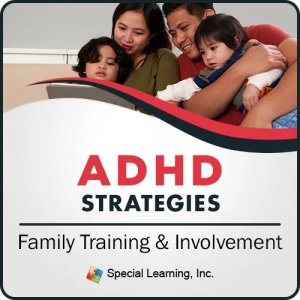Occupational Therapy Evaluation
Occupational therapy is a health rehabilitation profession designed to help people of all ages with physical, developmental, social, or emotional deficits regain and build skills that are important for functional independence, health, and well-being. Children with autism have developmental delays that leave them incapable of going through their normal occupational responsibility, which is to play and learn.
The first step for parents of children with autism in helping their kids reach their maximum potential is to have their child see an occupational therapist for an evaluation.
Occupational therapists are health professionals who are nationally certified to practice occupational therapy and have completed a Master’s degree. They use activities and interventions to maximize the independence and health of their client. An occupational therapist’s services include assessment, treatment, and education of the client and their family. They are focused on developing daily living skills, work readiness, or work performance and facilitating the development of sensory-motor, perceptual or neuromuscular functioning or range of motion.
An Occupational therapist assistant can perform interventions but cannot evaluate. Occupational therapist assistants (OTA) are only required to complete an associate’s degree to be able to practice their chosen profession.
The occupational therapy evaluation is a test administered by an occupational therapist in order to identify how a disability, injury, or disorder affects your child’s ability to play and learn. In the course of the evaluation, your child may be asked by the therapist to do some actions or movements that will help assess function. These movements are simple actions that may be constantly used by your child during play or during learning time. An example of a movement is reaching for a book that is on top of a shelf or climbing on top of a stool to use the sink. Coordination skills such as feeding themselves and how to improve their handwriting are also covered by occupational therapy.
Occupational therapy for autism may be done in different settings. It may be done at home, in school, or in a clinical setting. Usually, the home and school are the frequent ideal settings since this is where your child routinely spends his or her time.
Preparing your Child for an Occupational Therapy Evaluation
Just like preparing for any out-of-routine activity, a child with autism will need to be coached before the appointment to achieve the best outcome. Since an occupational therapy evaluation is not something you and your child do on a daily basis, introduction and familiarization are important so that your child can cooperate during the evaluation and accurate results will be produced.
Practicing following instructions at home can gradually familiarize your child with what may be done during the actual test. If your child is practicing a specific system of communication, it is best to inform your occupational therapist about the methods being used. For instance, if your child uses the Picture Exchange Communication System (PECS) then be sure to bring the picture cards that you use so that your child can communicate properly with the therapist. Also remember to dress your child in comfortable clothes since the evaluation may ask your child to perform movements such as lifting, climbing, running, and other physical activities.
Reference:
KidsHealth kidshealth.org: Occupational Therapy March 22, 2011,
kidshealth.org/parent/general/aches/occupational_therapy.html
Copyright © by Special Learning Inc. All right reserved.
No part of this article may be reproduced in any manner whatsoever without written permission except in the case of brief quotations embodied in critical articles and reviews. For information, contact Special Learning Inc., at: contact@special-learning.com








